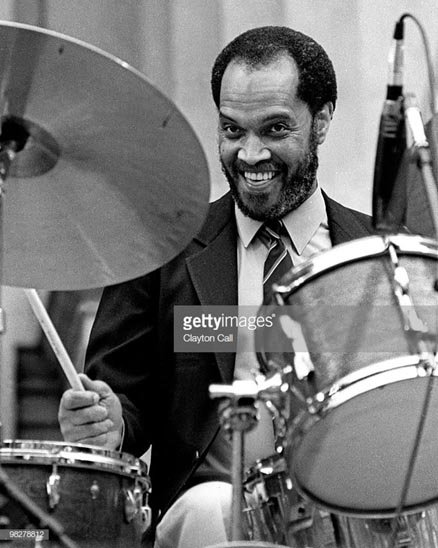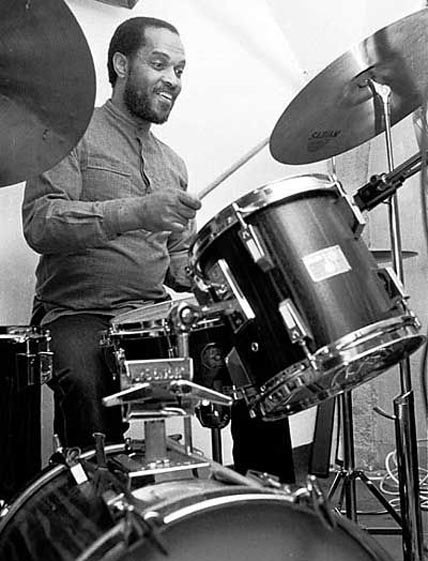Joe Henderson (tenor sax), Lee Morgan (trumpet), Barry Harris (piano), Bob Cranshaw (bass) and Billy Higgins (drums). From the album The Sidewinder (1964).
Billy Higgins was an important and controversial jazz drummer who played in the hard bop and free jazz styles. A very versatile and intuitive performer, his agile rhythmic patterns achieved a perfect balance between function and form. In 1936 he began playing rhythm and blues in Los Angeles. In 1953 he formed with his friend Don Cherry the group Jazz Mesiash and then they met Ornette Coleman. In 1958 they recorded their first album Something Else!!!! The Music of Ornette Coleman and the controversy spread throughout the jazz community, dividing musicians, critics and fans alike. In 1959 the group moved to New York and became the focus of attention, and with the addition of bassist Charlie Haden, Coleman brought to life the sounds and structures he had pursued for years.

Their debut in 1959 with Atlantic Records The Shape of Jazz to Come marks a turning point in the avant-garde movement. In 1961 Higgins left Coleman and worked as a studio musician for Blue Note Records, appearing in major albums until Liberty Records bought the Blue Note label. Higgins continued to be highly sought after as an avant-garde drummer until he returned to Los Angeles in 1978. The following year he recorded his first album as a leader, but he also continued to work as a sideman. In 1987 he met again with Coleman and Cherry and they recorded a new album. Then he retired from the stage and devoted himself to teaching. He had to undergo a liver transplant and eventually died of pneumonia in 2001 at 64 years of age.

This theme is cheerful and fun, and after the exposition Henderson starts to make his solo with fast and smiling phrases that make you want to live. He is followed by Morgan with a slightly more moderate speech, but equally lively and playful. Harris then enters quietly by playing well-chosen phrases, but then accelerates his solo occasionally to make it more attractive. Then Henderson and Morgan take a riff of the original melody for Higgins to make four-bar solos before the group re-expose the theme.
© Blue Note Records

Between the 50s and 60s, thanks to people like Coleman, Jazz reached a totally new status, where the boundaries of harmony were being pushed.
Paradoxically it's what have created its downfall until its resurgence with fusion in the 80s.
Hello, edprivat. Good to see you around. Indeed, free jazz dominated the 1960s, stripping jazz of the solid foundations it had built on in previous decades. And then in the 1970s the electronic instrument revolution and the approach to rock took it even further away from its origins. Fortunately, thanks to musicians like Art Blakey, who had been playing and teaching hard bop since the 1950s, and new talents like Wynton Marsalis, jazz was resurrected in the 80s.
Don't forget about Weather Report!!!
Have you heard of Snark Puppy?
Of course, Weather Report, the Mahavishnu Orchestra and Return to Forever. I don't know about Snark Puppy. What kind of jazz do they play?
Dude !!! I love Mahavishnu !!!!
Well you gotta check out Snark Puppy
The new generation of jazzkids love it ...
And Jacob Collier
Who annoys me profoundly, but I might be just envious of his talent and don't know how to deal with it...
I've found Snarky Puppy an interesting mixture of wind section and electronica with excelent musicians, especially the keyboardist in this particular track. They've won three Grammy Awards. About Collier the piano programming to playing by itself is very good and his way of playing it's also superb. He's won also two Grammy Awards, so both are doing very good music. Thank you for showing me the jazz of the future :-)
My pleasure, they are indeed the future!!